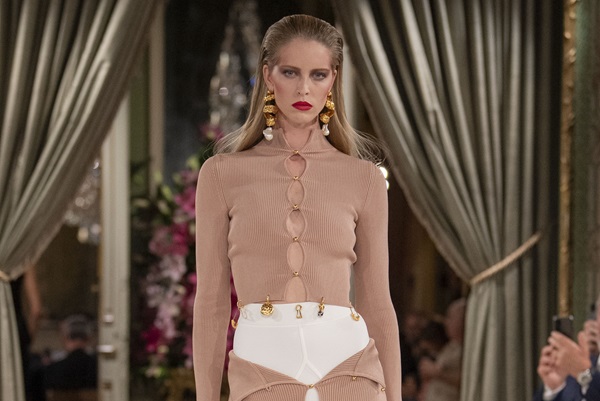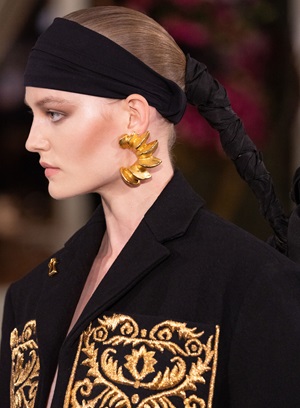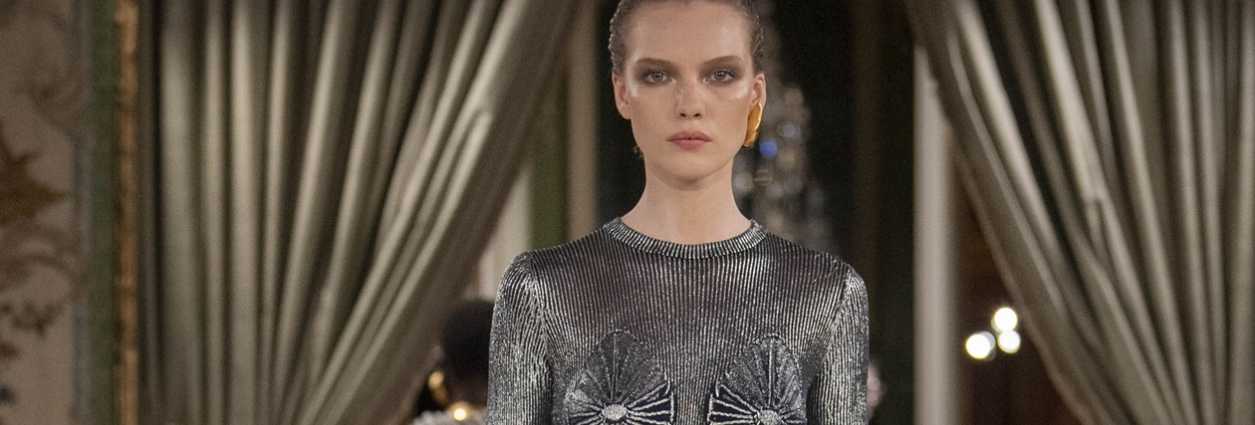Schiaparelli: An Everyday Sensation
By Olga_Gafurova Tuesday, 13 February 2024 4:38 PM

In her private album, the actress Marisa Berenson describes a pivotal moment in the early career of her grandmother Elsa Schiaparelli. It was 1927, and Elsa was admiring a friend’s sweater. Upon learning it was made by some Armenian knitters, she tracked them down and commissioned a sweater of her own, which, Berenson writes, “she specified should look like the primitive drawing of a child in prehistoric times.” That piece, with its deliberately imperfect trompe l’oeil bow and its surrealist, offbeat humor, was an immediate sensation, and Elsa’s first signature hit. It also formed the beginning of what would be Elsa’s ethos for her maison: Begin with an everyday garment—in this case, a humble wool sweater—but make it a sensation.

In Elsa’s hands, that workaday, utilitarian item became something to be discussed, something to be desired, something to provoke. From there, she’d go on to create iconic, era-defining pieces featuring skeletons, lobsters, insects and circus animals. But her philosophy never changed: Take something familiar. Now make it unfamiliar. From head to golden toes, Schiaparelli ready to wear is an exercise in making the everyday come to more vivid, more surprising life. I have found that the more familiar the item—a crisp white shirt, a fluid trench, a black smoking blazer—the more joyful it is to rediscover it anew when combined with the house codes, which often reveal themselves as secrets. Every button on the sleeves is a piece of bijoux, echoing house iconography past and present: the keyhole, the padlock, the eye, the nipple, the dove. The measuring tape motif—one that Elsa debuted twined around a bust-shaped perfume bottle for her perfume “Shocking”—now trims the edges of both everyday tailored jackets and epic going-out blouses alike. The humor inherent in every part of our heritage speaks most loudly in our two favorite bags. First, there’s our beloved Visage purse, which I call the Mrs. Potatohead of the Place Vendôme. (I can’t tell you how many stories I’ve heard of women being stopped on the street or in airports or restaurants by people wanting to know about this bag.) Then there’s our new Schiap bag, an almost impossible-to-make sac of trapunto leather: pillowy Napa stitched in a repetition of measuring tapes, and accented with our gold hammered keyhole. You see that humor and heritage in our footwear as well. Our keyhole adorns the toes of our heel, and our gold toes—a new classic—caps our new shoe, inspired by an allAmerican sports trainer. It’s the fantasy of couture made for the street. That trainer is especially meaningful to me because it’s symbolic of who I am: an embrace of my Americanness in a context of profound Frenchness. Ready to wear is a combination of both: the ease of being an American; the rigor of French chic. This ready to wear collection is about that duality. A reduced palette of whites and ecrus contrasts with the more ornate Schiap blacks and golds. As we have to understand today, two things can be true at once. And so we have Schiaparelli ready to wear. Is it for the everyday and should it be, dare I say, “easy”? Yes. But does it also need to cause a sensation, to inspire someone to walk across a room, to be an extraordinary echo of some of our best work in the couture? Yes. Elsa did it first. We are doing it all over again.





























Add new comment